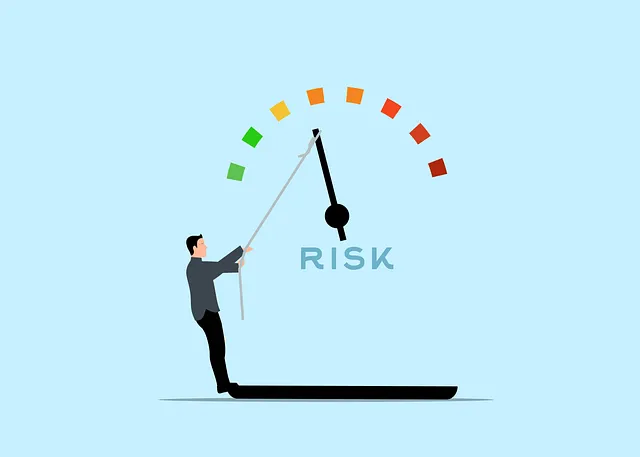Contents
In leveraged trading, liquidation is no boogeyman: it can throw a wrench into any strategy. Before opening a leveraged position, learn everything about crypto liquidation in our guide! We will also tell you how you can turn this predicament to your advantage by learning from others.
Key Takeaways
- Crypto liquidation refers to the process initiated by the trading platform in case the trader does not meet the margin requirement. Margin level is the ratio of equity to margin, or borrowed funds for use in a leveraged position.
- A voluntary liquidation happens if the trader wants to close their position or redistribute the portfolio. The opposite is forced liquidation, the process that automatically closes a trader’s position and sells their collateral at the liquidation price.
- Even though liquidation is avoidable, it does happen in considerable amounts. The data on crypto liquidations is a valuable tool to predict changes in market trends and volatility, pinpoint an exit and entry price, or even recognize market manipulation.
What does liquidation mean?

Broadly speaking, liquidation implies selling someone’s assets to cover expenses, pay off debts or borrowed funds, or limit risk exposure. Liquidation can occur in different contexts: personal assets, business, and in a market. Crypto liquidation is a type of market liquidation in which a trader’s leveraged position is closed automatically by the exchange or trading platform.
Not any type of position can be closed like this. A broker or exchange takes these measures if the trader’s position is opened using the platform’s funds. Borrowing is typical for leveraged trading or margin trading. When the trader’s losses reach a level where they no longer have enough funds in their trading account to maintain their position, it is closed by the liquidation process. In addition to protecting the trading platforms, it also in a way protects traders from excessive risk by preventing them from losing the initial capital and going into debt.
Unexpected liquidations are not the norm, even though in the crypto market a sharp price drop can cause cascades of liquidations. Before a forced liquidation occurs, when the trader’s margin level drops below the** maintenance margin**, determined by the platform, a margin call is issued. In this case, forced liquidation can be avoided by bringing the margin level back with extra funds. Traders also usually know the liquidation price, which helps them adjust their trading strategy.
Read more: Beginner’s Guide to Crypto Margin Trading: Why, How, and Where to Do It
Alternatively, crypto liquidation can be voluntary or partial. Partial liquidation involves selling only a portion of the assets in a trading or investment portfolio to realize profits, rebalance the portfolio, or manage risk without completely exiting the market. Maintaining exposure to investment while freeing up cash or adjusting asset allocation — a sound and balanced decision.
When should you keep liquidation in mind? Mostly when trading with leveraged positions or with margin on derivatives markets. While less common, liquidation can also happen in spot trading if the trader is using leverage or margin and their account equity falls below the required maintenance margin.
How to Avoid Forced Liquidation?

A forced liquidation can wipe out an entire trading balance so it’s normal to want to avoid a total liquidation. As we have explained, it is rather predictable and manageable. Here are some tips:
- Always set stop-loss orders to limit your losses if the market moves against your position. You can adjust your stop-loss to align with your risk tolerance and trading strategy.
- Over-leveraging your trades is not a good idea. High leverage increases the risk of being liquidated.
- Do not put all your capital into one highly leveraged trade. Diversifying your trades across different assets will spread risk and reduce the impact of a single trade turning against you.
- Regularly monitor your positions and the market conditions to stay informed about any potential price movements that could lead to liquidation. Stay vigilant and be prepared to adjust your positions if necessary.
- Trading during periods of high volatility increases the risk of rapid price swings that could trigger liquidations. Since the volatility of the crypto market cannot be helped, adjust your position sizes accordingly.
- Use risk management tools such as trailing stops, take-profit orders, and position-sizing strategies to minimize losses.
Read more: Beginner’s Guide to Crypto Spot Trading: What it is and How it Works
Tips to Avoid Crypto Liquidation
The crypto market is somewhat different from more traditional markets. It bears higher risks and is inherently more volatile. With this in mind, here is what we can suggest to avoid a forced liquidation of a crypto position:
- Stay updated on the latest news and developments in the crypto market. Be aware of regulatory changes, technological advancements, or market trends affecting your positions.
- Crypto markets are prone to sudden and sharp price movements known as flash crashes. Stay cautious during these periods and consider setting wider stop-loss orders or reducing leverage.
- During high volatility or uncertainty, consider switching to stablecoins to protect your capital. Stablecoins are pegged to stable assets like the US dollar and can help reduce exposure to market fluctuations.
- Resist the urge to chase quick gains or enter trades impulsively due to FOMO (Fear of Missing Out). Stick to your trading strategy and risk management plan to avoid making emotional decisions.
- Use technical analysis tools and indicators to analyze price charts and identify entry and exit points. Technical analysis can help you make more informed trading decisions and reduce the risk of being caught off guard by sudden price movements.
And as always is the case with trading, impulsive decisions and acting on emotions are your enemy. Stay focused to mitigate the partial or total loss and correctly recognize opportunities.
Liquidations as Analysis Tool

Even though it’s something to be avoided if it can be helped, crypto liquidations are bound to happen as the trading volumes reach hundreds of billions these days. Did you know that this data can be used for valuable insights?
The crypto liquidation data can hint at market sentiment, potential price movements, and overall market dynamics. For example, a high number of liquidations may indicate panic selling or excessive leverage in the market, suggesting a potential market reversal or correction. Monitoring liquidation data can help traders anticipate and react to sudden price movements triggered by cascading liquidations.
Liquidation data can reveal the level of leverage being used by traders. High liquidation rates may indicate that traders are over-leveraged, increasing the likelihood of cascading liquidations and market volatility. Traders also use it to identify key support and resistance levels. For example, a cluster of liquidations at a specific price level may indicate a strong support or resistance level where traders are getting margin called.
Moreover, unusual patterns in liquidation data could suggest market manipulation or coordinated trading activities. Traders and investors can use liquidation data to assess the risk level in the market. Understanding the frequency and magnitude of liquidations can help traders adjust their risk management strategies and position sizes accordingly.
Conclusion
We hope that now you are better equipped to manage your leveraged positions. Sometimes you may go for partial liquidation if needed or have to calculate if the total liquidation really is the worst-case scenario.
Was the advice in this article helpful? Let us know! Join the conversation on X, Facebook, Telegram, or the subreddit. Find even more content for crypto traders and fans on our blog.
Frequently Asked Questions
What is a liquidation in crypto?
In crypto trading, liquidation is when a trader’s position is automatically closed by the exchange due to insufficient funds to cover losses. It helps prevent further losses by closing the position before it becomes too risky. Exchanges use liquidation to protect traders and the platform from excessive risk.
Where can I see crypto liquidations?
You can see crypto liquidations on many trading platforms by checking the liquidation feed or liquidation section on the exchange. This data typically shows recent liquidations, including the asset, quantity, price, and the reason for liquidation. Some third-party websites also provide real-time updates on liquidations across multiple exchanges.
How do you avoid liquidation in crypto?
To avoid liquidation in crypto trading, set appropriate stop-loss orders to limit potential losses. Additionally, carefully manage your leverage and only use leverage you can afford to lose. Regularly monitor the market and your positions to make timely adjustments if needed.
What happens at the liquidation price?
At the liquidation price, the exchange automatically closes a trader’s position to prevent further losses. This occurs when the trader’s margin balance falls below the required maintenance margin. Liquidation protects the trader from losing more than their initial capital.
Disclaimer
This article is not a piece of financial advice. When dealing with cryptocurrencies, remember that they are extremely volatile and thus, a high-risk investment. Always make sure to stay informed and be aware of those risks. Consider investing in cryptocurrencies only after careful consideration and doing your own research.












